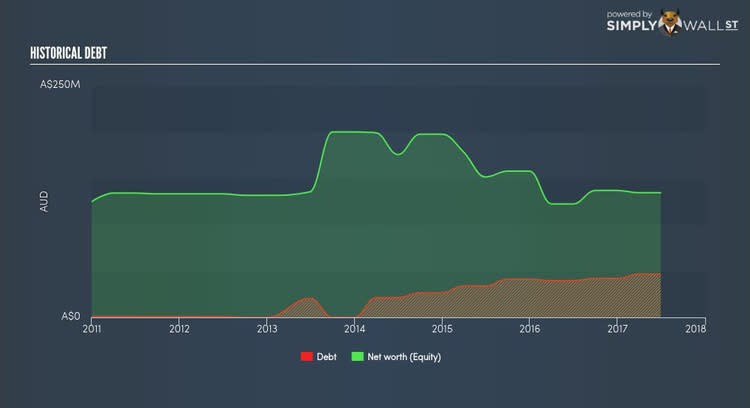Is Resource Generation Limited’s (ASX:RES) Balance Sheet Strong Enough To Weather A Storm?

Resource Generation Limited (ASX:RES) is a small-cap stock with a market capitalization of AUD $28.31M. While investors primarily focus on the growth potential and competitive landscape of the small-cap companies, they end up ignoring a key aspect, which could be the biggest threat to its existence: its financial health. There are always disruptions which destabilize an existing industry, in which most small-cap companies are the first casualties. Here are few basic financial health checks to judge whether a company fits the bill or there is an additional risk which you should consider before taking the plunge. See our latest analysis for RES
Does RES generate an acceptable amount of cash through operations?
There are many headwinds that come unannounced, such as natural disasters and political turmoil, which can challenge a small business and its ability to adapt and recover. These catastrophes does not mean the company can stop servicing its debt obligations. Fortunately, we can test the company’s capacity to pay back its debtholders without summoning any catastrophes by looking at how much cash it generates from its current operations. RES’s recent operating cash flow was -0.09 times its debt within the past year. This means what RES can generate on an annual basis, which is currently a negative value, does not cover what it actually owes its debtors in the near term. This raises a red flag, looking at RES’s operations at this point in time.
Can RES pay its short-term liabilities?
What about its commitments to other stakeholders such as payments to suppliers and employees? As cash flow from operation is hindered by adverse events, RES may need to liquidate its short-term assets to meet these upcoming payments. We test for RES’s ability to meet these needs by comparing its cash and short-term investments with current liabilities. Our analysis shows that RES is unable to meet all of its upcoming commitments with its cash and other short-term assets. While this is not abnormal for companies, as their cash is better invested in the business or returned to investors than lying around, it does bring about some concerns should any unfavourable circumstances arise.
Can RES service its debt comfortably?
Debt-to-equity ratio tells us how much of the asset debtors could claim if the company went out of business. In the case of RES, the debt-to-equity ratio is 34.77%, which indicates that its debt is at an acceptable level. While debt-to-equity ratio has several factors at play, an easier way to check whether RES’s leverage is at a sustainable level is to check its ability to service the debt. A company generating earnings at least three times its interest payments is considered financially sound. RES’s profits amply covers interest at 35.82 times, which is seen as relatively safe. Debtors may be willing to loan the company more money, giving RES ample headroom to grow its debt facilities.
Next Steps:
Are you a shareholder? RES’s cash flow coverage indicates it could improve its operating efficiency in order to meet demand for debt repayments should unforeseen events arise. In addition to this, the company may not be able to pay all of its upcoming liabilities from its current short-term assets. Given that RES’s financial situation may change. I recommend keeping abreast of market expectations for RES’s future growth on our free analysis platform.
Are you a potential investor? RES appears to have a sensible level of debt, meaning there’s some room to take on more debt if needed. But its current cash flow coverage of existing debt, in addition to the low liquidity, is concerning. Though, keep in mind that this is a point-in-time analysis, and today’s performance may not be representative of RES’s track record. You should continue your analysis by taking a look at RES’s past performance analysis on our free platform to figure out RES’s financial health position.
To help readers see pass the short term volatility of the financial market, we aim to bring you a long-term focused research analysis purely driven by fundamental data. Note that our analysis does not factor in the latest price sensitive company announcements.
The author is an independent contributor and at the time of publication had no position in the stocks mentioned.

